8 Myths About Space That We Still Believe
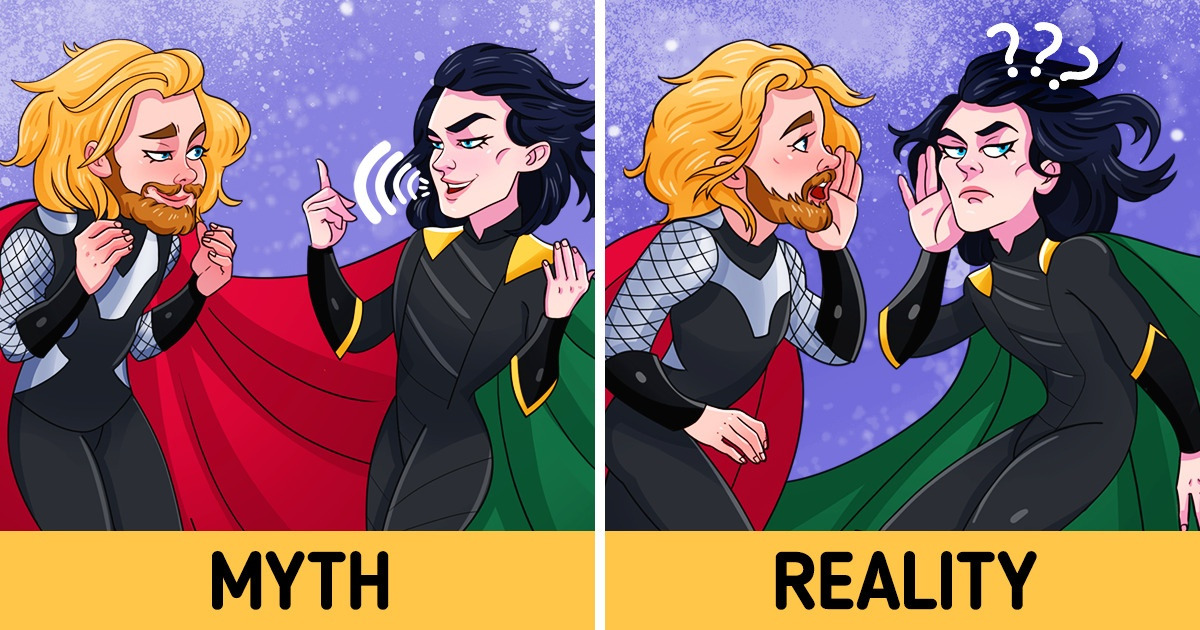
Today, space is one of the most studied topics in the scientific community. However, despite this, there are many cosmic myths that we continue to believe in.
5-Minute Crafts will tell the truth about popular misconceptions about space.
Myth 1: The Moon has a dark side.
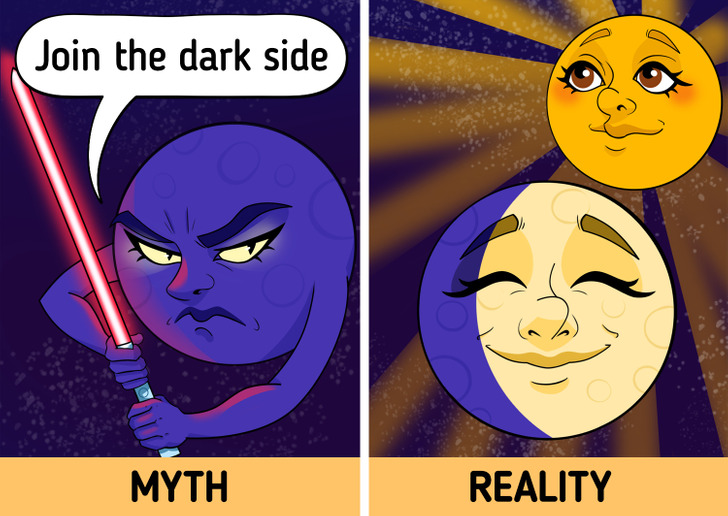
When people say “dark side of the Moon,” they probably think of a gloomy place where sunlight never falls. In reality, all sides of the Moon are evenly illuminated by the Sun. However, only one hemisphere of the Moon can be observed from the Earth due to the fact that the period of rotation around the Earth and the period of rotation around the axis of the Moon are very close.
The “dark side” of the Moon is more properly called the “far side.” And the first pictures of the “dark side” were obtained back in 1959.
Myth 2: You can hear sound in Space.
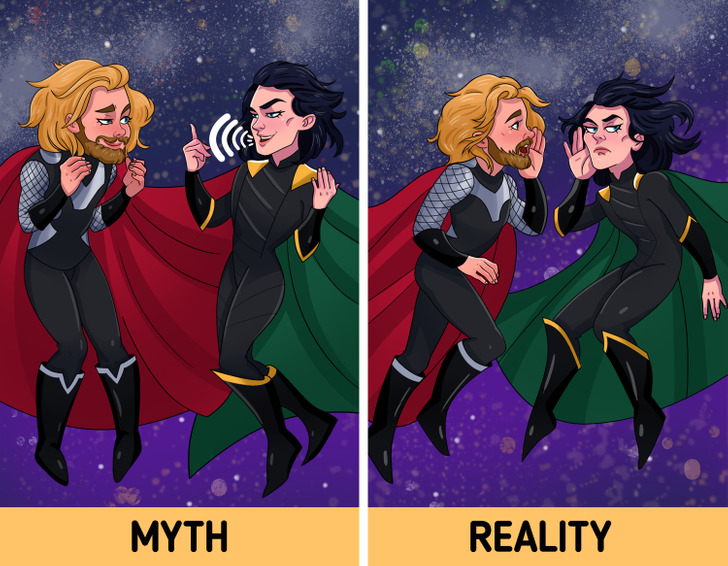
Many movies show that sounds can be heard in space. However, there is no atmosphere in space, which means that nothing can create sound vibrations. Asteroid crashes, supernovas, and burning planets will be silent in space to an outside observer.
Myth 3: An asteroid can hit the Earth at any moment.
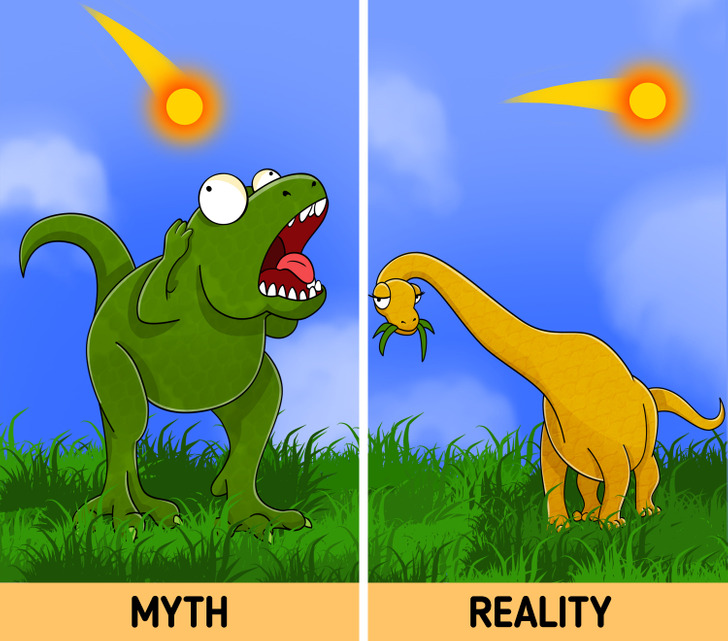
Under a 2005 congressional mandate, NASA and a network of telescopes around the world record all asteroids larger than 459 feet (140 meters) wide. Of the asteroids discovered by NASA, there is not one that would have a high probability of colliding with the Earth in the foreseeable future.
Myth 4: Asteroid Belts are dangerously dense.
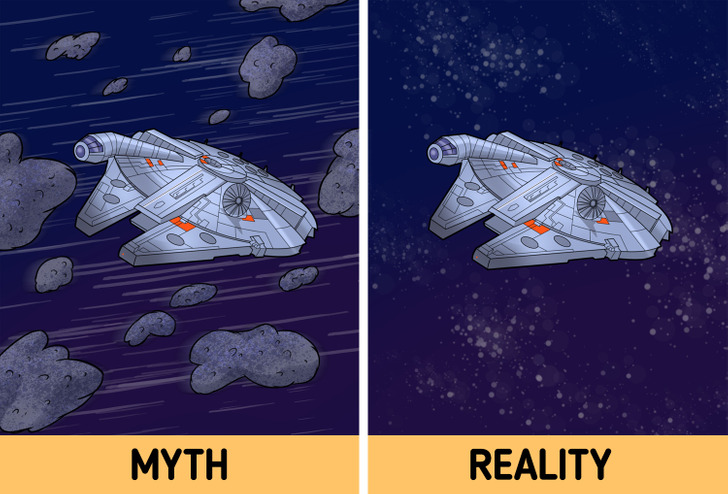
Our solar system also has an asteroid belt between the orbits of Mars and Jupiter. But a space probe is unlikely to collide with one of them on its way. The fact is that space is incredibly large and empty, especially when it comes to macroscopic objects like planets and asteroids.
According to the Backman Report, NASA estimates the chance of a natural collision between 2 asteroids to be once every 10 million years. Therefore, even assuming that the space probe is moving at a speed that is comparable to an asteroid and is about the size of an asteroid, the space probe will not collide with an asteroid in the main asteroid belt for 10 million years.
Myth 5: There is no gravity in space.
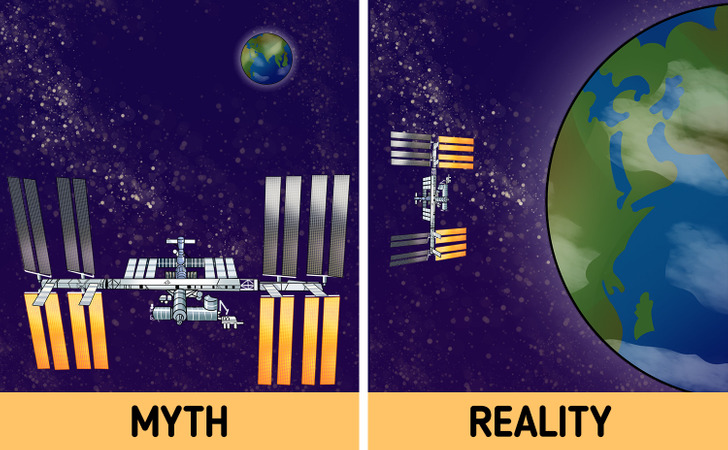
This misconception is probably due to terms such as “zero gravity” and “weightlessness.” In fact, a small amount of gravity is present in the entire cosmos to one degree or another. Gravity keeps the Moon in orbit around the Earth, makes the Earth revolve around the Sun, and keeps the Sun in place in the Milky Way galaxy. The gravitational pull weakens with distance but never completely disappears.
Since gravity is present everywhere in space, all objects are always falling: toward the Earth, toward the Sun, or toward the galactic center. There are 2 reasons why all space objects can appear to “float” in space:
- The size of outer space, which contains significantly more space than Earth.
- The tendency of objects to revolve around planets rather than collide with them.
Myth 6: The sun is a burning ball of yellow.
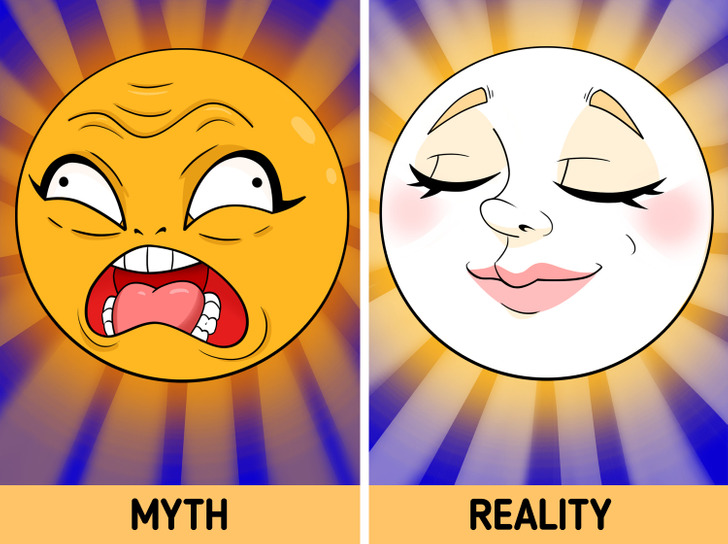
In reality, sunlight, like the Sun itself, is 100% white. It seems yellow to us because of the refraction of rays in the Earth’s atmosphere.
The fact is that the rays passing through the air scatter and break into different colors. A similar effect occurs with light that passes through a prism. The waves of green, blue, and purple are short and give us blue skies. Yellow, orange, and red wavelengths pass straight through and do not scatter. The more distance sunlight travels through the atmosphere, the redder it appears. This is the reason why sunsets look red.
Myth 7: Astronauts eat everything from tubes.
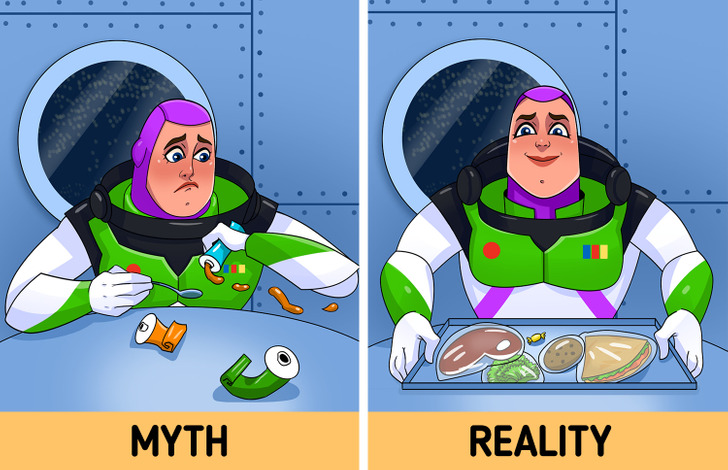
Previously, space food really was in tubes. However, it was inconvenient and unappetizing and the menu was quite limited. But now tubes are almost never used. Instead, zip lock bags, retort pouches, and cans are used.
The menu of astronauts is practically no different from the menu of a person on Earth and contains more than 100 dishes. They eat everything from vegetables and fruits to prepared meals and desserts. Mexican tortillas are also popular on the ISS.
Myth 8: Medieval people thought the Earth was flat.
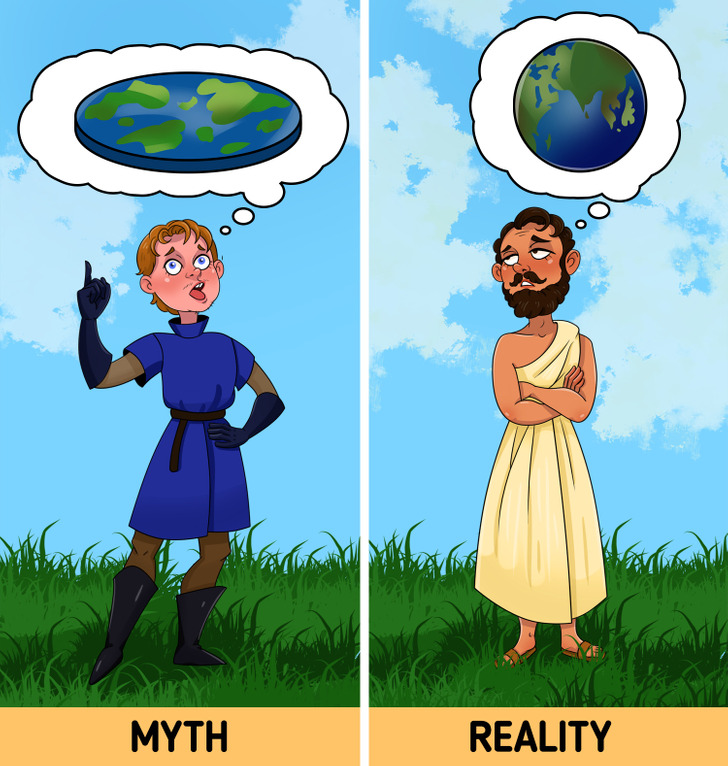
In fact, at the end of the 15th century, most educated people knew that our planet was not pancake-shaped. The idea that the earth is spherical dates back to ancient Greece. This was figured out by Pythagoras around 500 BC. Since that time, this opinion has been dominant among Greek writers and has also been taught in schools.
Also, the ancient Greek mathematician Eratosthenes was able to accurately “measure” the circumference of the Earth. As a result of the experiment, he received data from about 24,000 miles to about 29,000 miles. Modern measurements estimate the circumference of our planet along the equator as 24,900 miles.